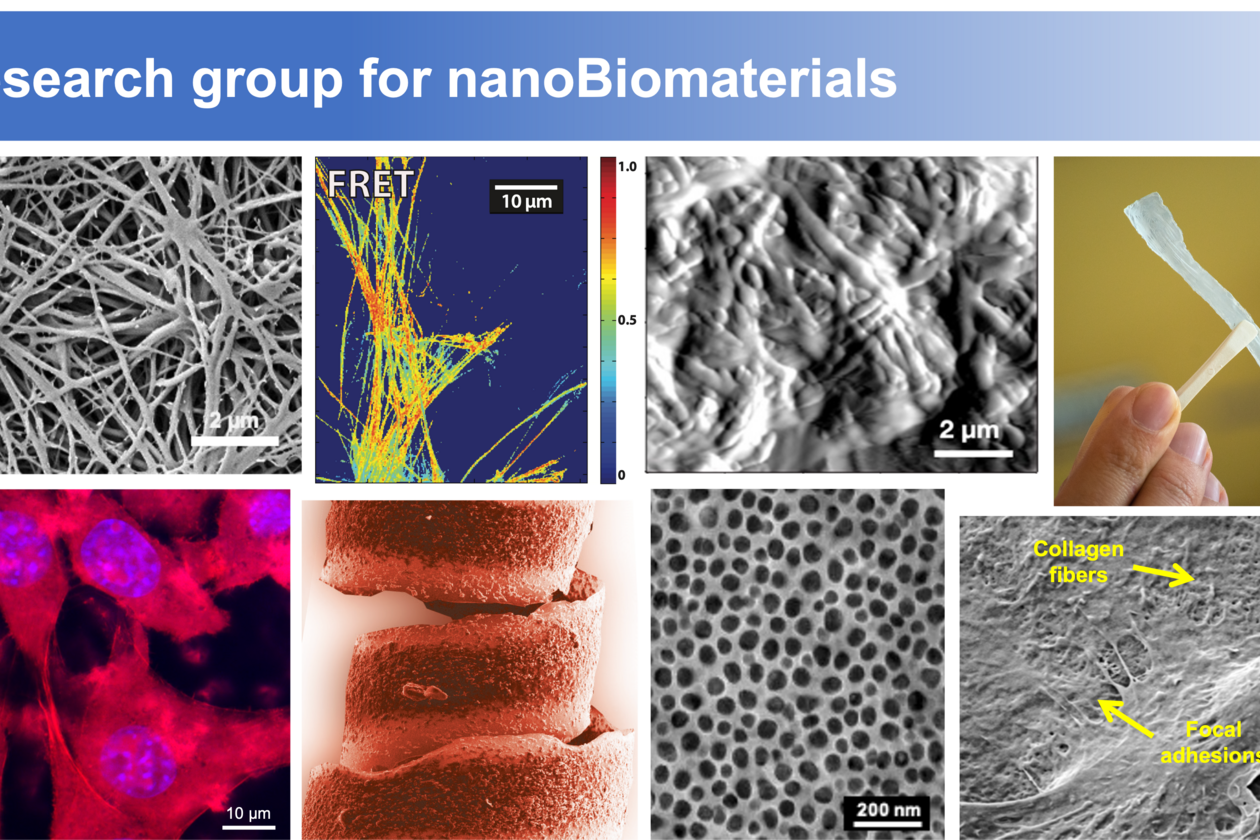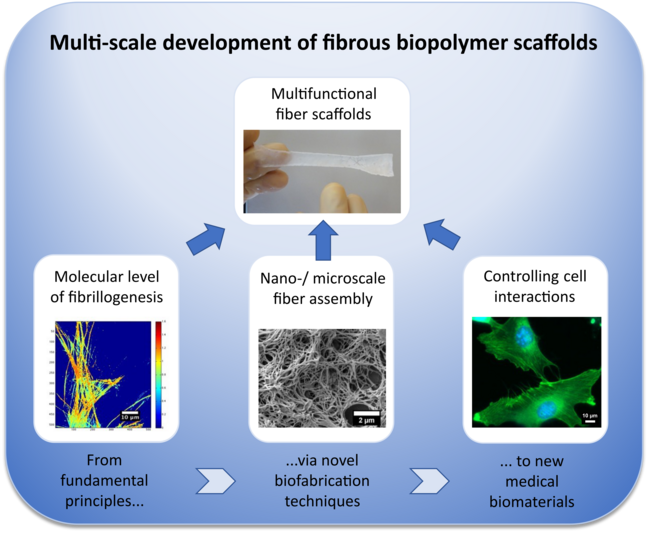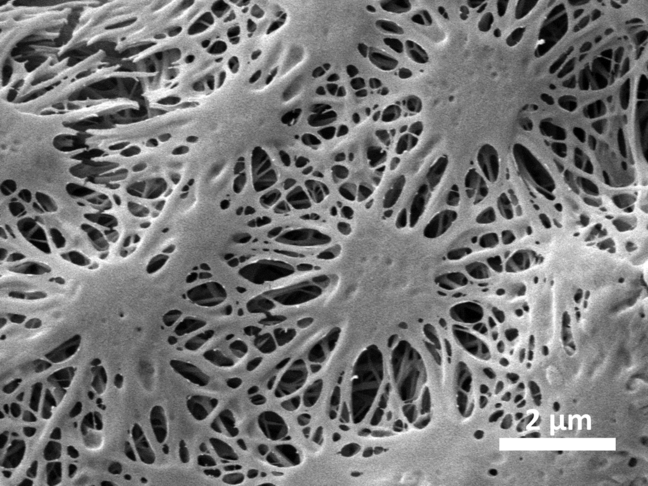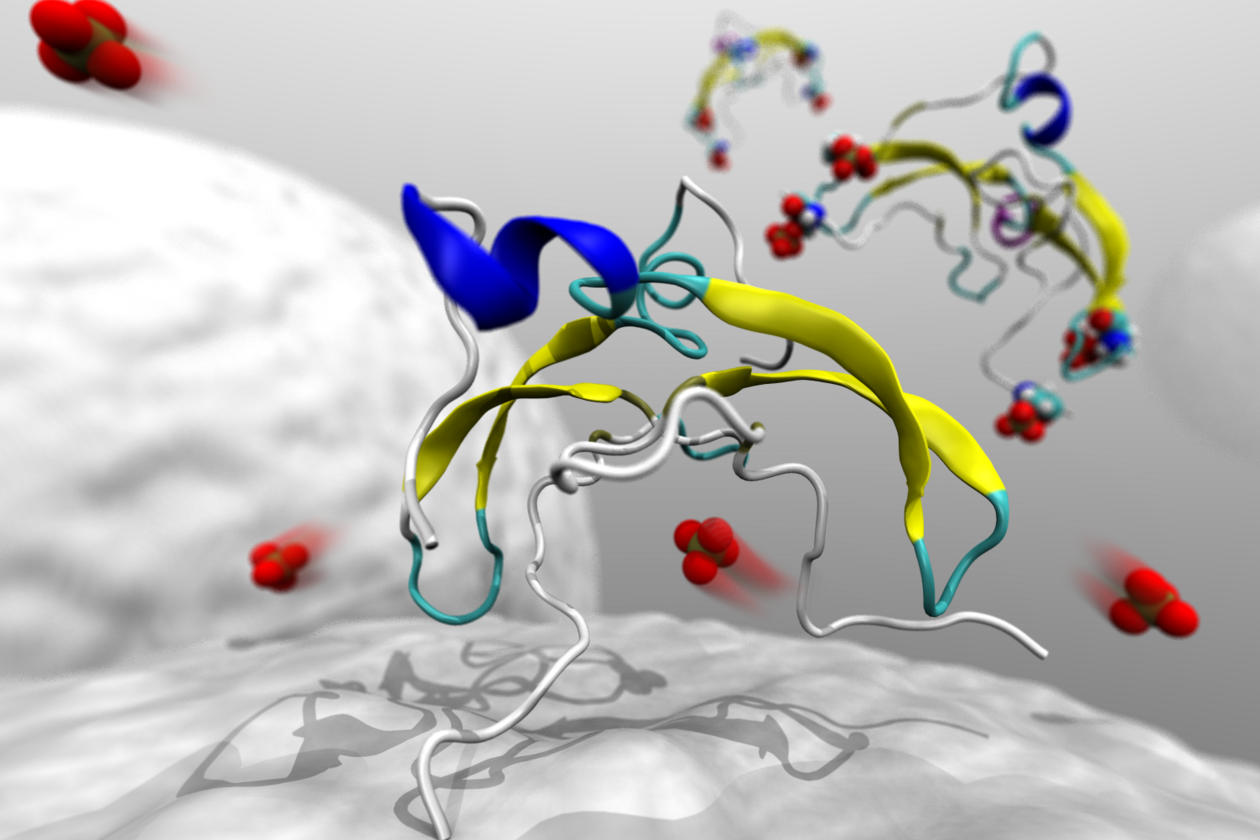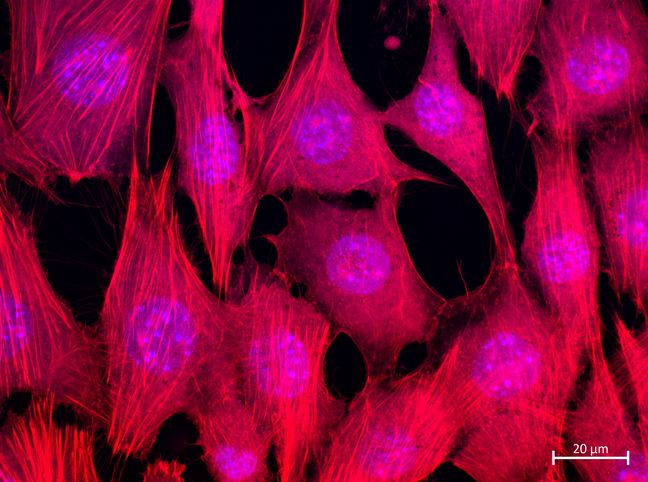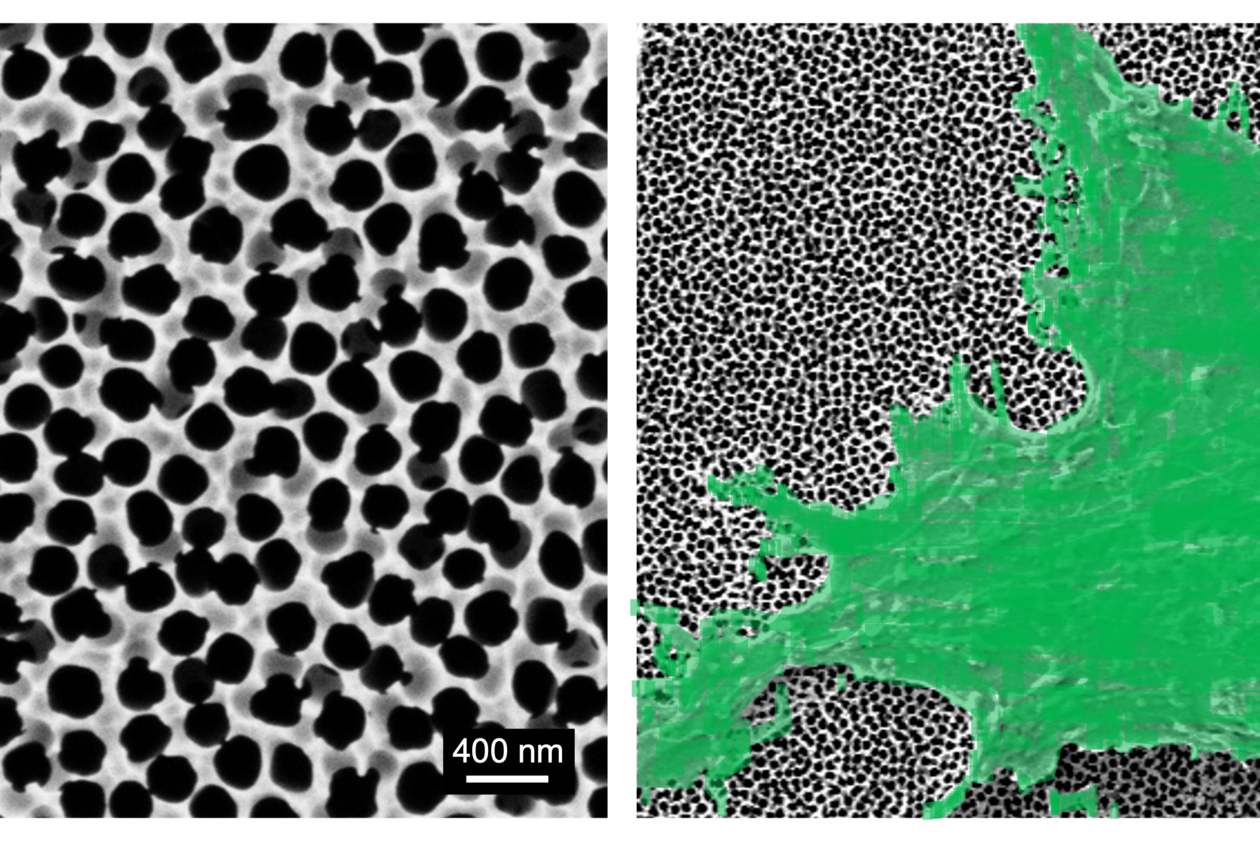Our interdisciplinary research team is interested in understanding cell-material interactions on different length scales. Based on fundamental biophysical principles, we develop new biofabrication techniques to prepare fibrous and porous biopolymer scaffolds for cell culture studies. The results of our research will be highly interesting for the development of multifunctional biomaterials for future tissue engineering applications.
Research focus
Tissues are composed of different cell types, which are surrounded by the extracellular matrix (ECM), a dense network of different protein nanofibers. When an injury occurs in a tissue, a nanofibrous fibrin clot initially closes the wound to facilitate cell growth and tissue repair.
Although nanofibrous biopolymer scaffolds are highly attractive for regenerative medicine it still remains challenging to prepare such scaffolds under physiological in vitro conditions. Therefore, our interdisciplinary research focuses on the multi-scale development and characterization of novel biomimetic fiber scaffolds for tissue engineering.
Our research activities span several length scales from the molecular level of protein fibrillogenesis via the nano- and microscale of scaffold assembly towards the development of macroscopic biomaterials.
© Stapelfeldt et al., Nano Letters 19 (2019)
Based on biophysical studies on fiber formation our group develops new biofabrication techniques for the preparation of fibrous scaffolds under physiological in vitro conditions.
Key techniques to fabricate biopolymer fibers that have been developed in our group are:
We also use established methods to develop fibrous biomaterials with new compositions and tailored functionality:
Changes on the molecular level of a biomaterial can influence its biofunctionality on different length scales. These structural changes can affect molecular signaling and the interaction with cells. For the development of future biomaterials, it is therefore important to understand the molecular mechanisms that occur during fiber assembly.
Our goal is to establish fibrous protein scaffolds as a biophysical model system for protein fibrillogenesis in a cell-free environment. To analyze conformational changes in fibrous protein scaffolds we use various modern characterization methods including Förster resonance energy transfer (FRET) measurements, circular dichroism (CD) and Fourier transform infrared (FTIR) spectroscopy.
We correlate our experimental studies with molecular dynamics (MD) simulations on protein interactions (collaboration with S. Köppen, Uni Bremen).
© Kulke et al., Journal of Chemical Information and Modeling 59 (2019)
© Stapelfeldt et al., Biofabrication 11 (2019) and Stapelfeldt et al., Nano Letters 19 (2019)
In native tissue, a complex interplay of topographical, biochemical and mechanical cues governs molecular and cellular interactions. Hence, controlling the nano-/microarchitecture and biofunctionality of a biomaterial is important to achieve tailored interactions during wound healing and tissue repair.
We use state-of-the-art microscopy techniques to characterize our fibrous biomaterials from the nano- to the microscale including scanning electron, atomic force and confocal microscopy. Towards future applications in tissue engineering we also characterize the stability and degradation properties of fibrous biopolymer scaffolds under varying environmental conditions including temperature changes or enzyme activity.
© Suter et al., Materials Science & Engineering C 126 (2021)
The complex interplay of cell-biomaterial interactions is one of the most important challenges in tissue engineering. Towards future applications in regenerative medicine we want to understand the interaction of our new fibrous biomaterials with different cell types, such as fibroblasts or keratinocytes.
We study how cells proliferate and migrate on fibrous biomaterials and how the actomyosin cytoskeleton and cell morphology are changed. Moreover, we are interested in the interaction of fiber scaffolds with bacterial cultures to screen them for antimicrobial properties. Typical techniques we use to study cell interactions are viability assays, fluorescence microscopy or live-cell tracking in combination with scanning electron microscopy.
© AG Brüggemann
To identify future strategies that efficiently treat large tissue defects, the scalability of a biofabrication processes is very important. We therefore aim to upscale our new biofabrication routines for future tissue engineering applications, for example by introducing polymer molding.
To facilitate optimum tissue regeneration the mechanical properties of macroscopic biomaterials need to be tailored. Hence, we also aim at optimizing the tensile and compression properties of our fibrous biomaterials for tissue repair.
Moreover, we want to understand how cells react to changes in the nanotopography in real time. Therefore, we combine protein self-assembly with polymer printing to prepare protein scaffolds with spatially controlled surface topographies to study their interaction with cells
When inorganic nanomaterials like various ceramics are used for tissue engineering, they are immediately coated with proteins from blood and other body fluids, forming a new material interface. To tailor the reaction of these new surfaces with the surrounding tissue, we want to understand the interaction of porous ceramic surfaces with proteins and cells. In this project, we use anodized alumina (AAO) nanopores and alumina microporous textiles as ceramic surfaces to study their interaction with different ECM proteins, fibroblasts, and keratinocytes. Based on these studies, we explore new applications of porous ceramic nanomaterials for soft tissue engineering.
© Dutta et al., ACS Applied Bio Materials 4 (2021)
If you are interested in joining our interdisciplinary team for PhD projects, B.Sc. or M.Sc. theses, please send us your application including curriculum vitae and research interests. We are always looking for new tem members with a strong background in biophysics, cell biology, biochemistry, materials science and related disciplines.
